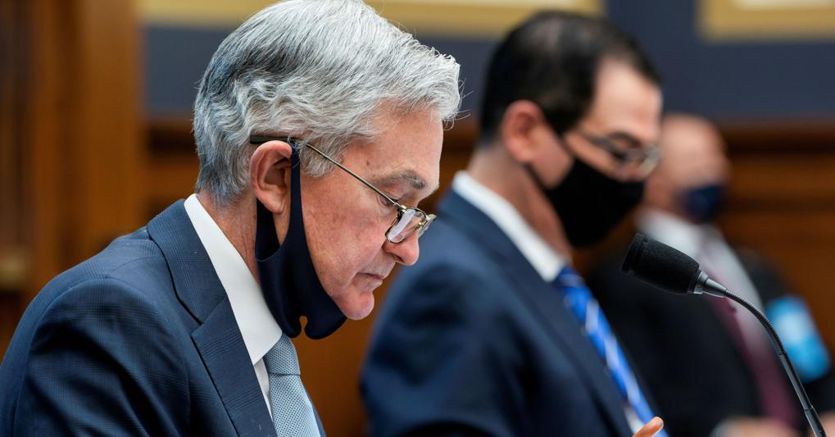Now is the right time. The US congress has launched the maxi-stimulus plan of 1,900 billion wanted by the Biden administration and the first checks destined directly to families – contrary to what will happen in the European Union – are already arriving. In March, as every three months, the Fed has each member of the Monetary Policy Committee (the FOMC) draw up economic projections. The March meeting of the US central bank will then have the task of making investors understand what the real risk of inflation in the United States is.
Live prices?
Investors are expecting a flare-up in prices, linked to the maxiplane. The market measures on inflation expectations are clear: they are all on the rise but, certainly not usual in the last period, the measures with a shorter time horizon have reached a higher level than the others. This is a sign that operators expect prices to be in tension in the medium term and subsequently an easing of pressures.
Loading…
Expectations over 2%
The 5y-5y inflation rate swap, which points to the period 2026-2031 – the five years starting in five years – now indicates 2%, which coincides with the inflation target (average, in the US), but the breaks 10-year evens point to 2.26%, which is a Fed’s first tolerance threshold, and 5-year break evens point to 2.50%. At the outbreak of the pandemic, the three financial instruments indicated 0.75%, 0.50% and 0.14% respectively. At the beginning of January they were all close to 2%. The upside is evident.
The Fed tends to use another measure of inflation expectations, the Cie, Common index of expectation, which is updated every three months. The December figure does not indicate any particular increases, but must be considered “overtaken” by events. The Cleveland Fed index – updated to March 12 – instead points to 1.48% over the ten-year time horizon and is therefore more moderate than inflation measures (the increase in the risk premium affects prices), but in April and May the same index was 1.16 per cent.
Rising yields
The rise in inflation expectations was especially accompanied by a sharp rise in government bond yields, which represent – as they are considered risk-free – a point of reference for the entire interest rate structure. Starting with the 2-3 year durations, there has been a rapid leap. The ten years went from 1.05% on January 25 – the day before the previous Fomc meeting – to 1.64%; the thirty years from 1.8% to 2.4%. There is therefore a risk that financial conditions could tighten, thus counteracting the efforts of the Federal Reserve to maintain an expansive stance.
Stable financial conditions
However, the financial conditions calculated by the Chicago Fed – taking into account more than 100 different indicators – do not show particular tensions. The indicator remained at the very low levels – but not very low, in the long term – reached after the introduction of the pandemic monetary policy. A sign that the transmission chain is not (yet?) Affected by the changed orientation of the market. The Fed, therefore, has the ability to intervene thoughtfully and is not forced to chase the markets.
